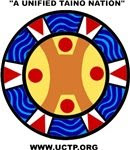Did You Know - The Tabanuko (Dacryodes excels) tree is native to the Caribbean region. Its vernacular names also include gommier and candlewood. The word tabanuko (also spelled tabanuco, tabonuco) is an indigenous Taino term for the tree that is still used today. It is distinguished by broad low buttresses, smooth gray bark, and compound leaves with five to seven fragrant, dark-green leaflets. The tree blooms between May and November while its fruits usually fall from October to December. When wounded, the tree exudes a clear, fragrant resin that hardens and turns white on exposure. This resin is also known as tabanuko. The wood is only slightly resistant to decay, lasting 3 years or less in the ground; however, the resin of tabanuko is used for making candles and torches, for caulking boats, for incense, and for medicinal purposes. Tabanuko is known to be very resistant to the effects of hurricanes and was also one of the woods used in the pre-Columbian era to craft Kanoa (canoes). The endangered Puerto Rican parrot or Higuaka feeds on tabanuko fruit pulp and seeds. - UCTP Taino New © 2011
Monday, November 21, 2011
Subscribe to:
Comments (Atom)






